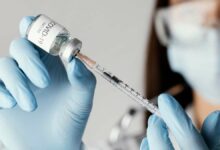Crucial Examinations to Perform in order to Identify Serious Illnesses such as AIDS
Effective treatment and management of disorders such as acquired immunodeficiency syndrome (AIDS) depend heavily on early identification. Frequent health screenings, which may include certain tests, may be very helpful in spotting any health issues before they become worse.

A Complete Blood Count (CBC) test provides important information on several blood components, including platelets, white blood cells, and red blood cells. If the CBC test results show a low white blood cell count (lymphocytes), it may be a sign of an immune system impairment and need further testing.
Test for HIV P24 antigen:
The most prevalent HIV protein, HIV p24 antigen, is necessary for the capsid that contains HIV genetic material to come together. Clinically, HIV p24 antigen detection is used to identify HIV infection in its early stages, when HIV-specific antibodies are not yet visible.
Antibody against HIV using ELISA/CLIA
The major screening method for HIV infection detection, an HIV antibody test, is often the next course of action after a P24 antigen test result. This test finds the antibodies that the body makes against the HIV virus. Even these studies usually show improvement a few weeks to months after exposure, they nonetheless provide important data for timely action.
The Rapid HIV Test is advised for those who need answers quickly or whose earlier tests yielded conflicting findings. It screens for HIV antibodies similarly to a traditional antibody test, but it gives answers in 20–30 minutes, allowing for quick counseling and decision-making.
By detecting both HIV antigens and antibodies, the Fourth-Generation HIV Test—also referred to as the Combination or Duo Test—goes beyond antibody detection. When compared to traditional antibody testing, this test provides earlier detection and can detect HIV infection two to three weeks after exposure.
The HIV RNA test, also known as the nucleic acid test (NAT) by RT-PCR, is very helpful in circumstances where early diagnosis is crucial. Being very sensitive, it may identify HIV RNA in the blood a few days to weeks after exposure, giving rise to the earliest HIV infection diagnosis now possible.Regular screening for sexually transmitted infections (STIs) is crucial, in addition to HIV-specific testing. Gonorrhea and syphilis are only two of the many STIs that might raise the risk of HIV transmission.
Preventive healthcare includes STI screening, which may include blood, swab, or urethral discharge screening tests.
To sum up, early identification of serious illnesses like AIDS depends on routine health screenings, avoiding several sexual partners, practicing good sexual hygiene, and undergoing certain tests.
Tests for HIV RNA by RT-PCR and P24 Antigen give early warning signs of possible health issues, which encourage further testing for HIV/AIDS and associated symptoms. Early identification makes it possible for prompt intervention, which in turn enables people to get the right medical attention and take preventative action to safeguard their health and wellbeing. Remember, life is saved by early detection.







